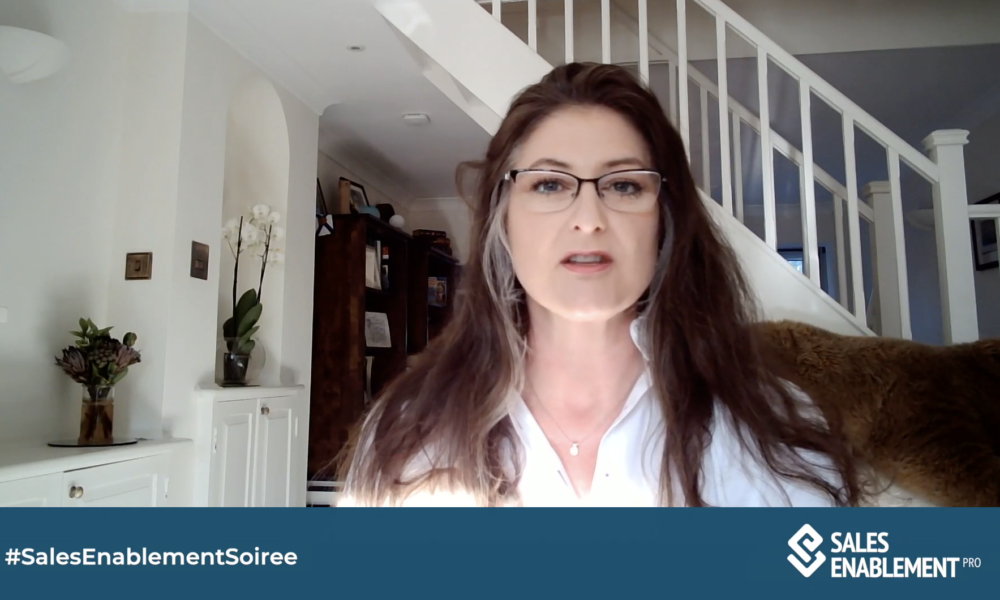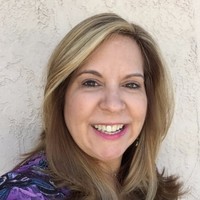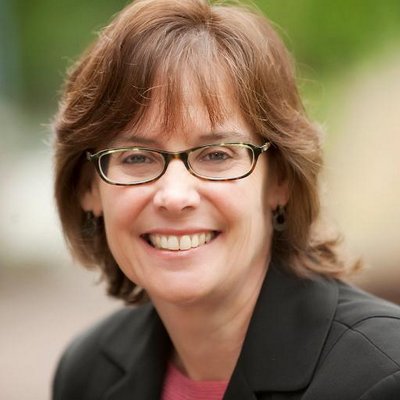Episode 143: Yohan Labesse on Gaining Sales Leader Confidence
2.4K Views | 17 Min Read
Shawnna Sumaoang: Hi, and welcome to the Sales Enablement PRO podcast. I am Shawnna Sumaoang. Sales enablement is a constantly evolving space and we’re here to help professionals stay up to date on the latest trends and best practices so that they can be more effective in their jobs.
Today, I’m excited to have Yohan from Lectra join us. Yohan, I would love for you to introduce yourself, your role, and your organization to our audience.
Yohan Labesse: Hello everyone, I’m Yohan Labesse from Lectra, and I’m very happy to have the opportunity to talk to you about why I really like sales enablement. I’ve been working in sales enablement for 15 years, and my role at Lectra is to be the director of the sales enablement team within the international sales department. I’m based in Bordeaux, where we have our corporate teams. I have a team of 8 people and we have around 200 salespeople across the world. I’m very happy to have this opportunity with the Sales Enablement PRO audience to talk about these topics today.
SS: We are very honored to have you join us. In fact, on LinkedIn, you wrote that enablement acts as a liaison between teams such as sales, marketing, and product. I would love to learn from you, how can enablement professionals help to improve the collaboration between those departments?
YL: I think it’s one of the main added values of the sales enablement function. If you look in history at why some companies have decided to create sales enablement, one of the main reasons is that in many companies, they have lost the connection between marketing and sales. I have to say that I never faced any internal barriers with being in between sales, marketing, product, and other functions because all of those functions and departments very easily see the added value to having someone that can digest everything and create the content that the salespeople need. Sometimes, it’s very hard for the other departments to know exactly what the salespeople need in the field, and it can be a bit frustrated to create content that is not really used by the field and other salespersons. This is where I think the added value is very easy to see internally by the other departments. Marketing, again, has direct access to salespeople through sales enablement and have only one department they are wanting to speak with. On the other hand, they know that we are doing our best to make sure that the salespeople will use the marketing content they created. So, it’s a win-win situation where it’s very easy internally to get buy-in from different departments because we make life easier for sales, marketing, and all the departments. For me, this one is not really a challenge. It’s something that has been very welcomed at different organizations and companies I’ve worked for.
SS: Absolutely. I think that is definitely one of the benefits of enablement. Now, when you go about developing a strategic roadmap for your enablement programs, how do you ensure that the program aligns with the goals and the interests of some of enablement’s key stakeholders?
YL: Good question. The way I see sales enablement is that on its own, you cannot have a specific and dedicated plan for sales enablement. Sales enablement is here to make the other plans easier to execute. The way I always create the plan for my team is always to go to the field, go to the sales management first, and also departments involved in the sales process. So, not only the sales team, but all the departments that at some point can influence the sales process. And just ask them what their challenges are, what would they like to improve, and where do they think that sales enablement can help. From here, it’s very easy to build the plan of the sales enablement team and validate this plan first with all the internal stakeholders. It’s always the way I have been building my different plans. It works well in that way, because then all the different departments are involved in designing the sales enablement plan. They can see very easily the benefits of the plan and can recognize themselves and their needs in the plan I’m going to build.
As I said, with no interaction with different departments, we don’t need sales enablement. The main purpose of sales enablement is that we need some team, like sales enablement, to gather the input from different departments to improve the selling experience in the end. Again, the easy way to align our goals with the other stakeholders is to first ask the other stakeholders, what do they need, what are their KPIs, their goals, and where we can help. And at the end, it will fit very well with what the sales team in the field also really wants and needs. This is the way I build my program, starting by asking the field and different departments, what do they need? Then, just ask the key stakeholders to validate my plan and then it’s quite easy to execute it.
SS: That’s fantastic. Now on the execution side, when you launch enablement programs in the field with the sales reps, what are some strategies to ensure that you are getting broad adoption of your programs?
YL: I have a double strategy here. I think the first strategy is to get the key executive sponsorship and make sure that all the content has been validated by the key executives. I’m not speaking about the top-down strategy, I’m speaking about being an internal trust advisor for the sales teams to explain that everything we are going to deliver has been validated by the marketing team, the legal team, the finance team, and so on.
Then, they can trust in it, they can reach all of our documents with no doubt, with no questions about the right version of the sales proposals, rules I need to play with, and so on. They know that whatever comes from sales enablement has been first validated, and it’s ready to be shared externally. That’s one side of the strategy.
The second side of the strategy is just to be close to the field and spend time with salespeople on a daily basis to know exactly what they need, what they use, what are their pain points on the daily basis. Then, just reprioritize what you think you can change. When you have a couple of quick wins, you will win trust, they will believe in you, they will see that you bring some value to the job.
I think the best strategies I have always used are getting the feedback from the field. We have different tactics for that, shadowing salespeople or building some local champions and network where we can get the voice of the field. The second part of the strategy is always come with something that is ready to be shared and to be used with no doubt about the validation and so on. That’s the way we do it here at Lectra.
SS: I think those are two fantastic approaches. Now, you’ve mentioned sales leadership. I would love to understand from you how a partnership with sales managers can also enhance adoption of enablement programs. What are some of the ways that enablement professionals can strengthen their relationships with sales managers and really leverage that partnership to improve their initiatives?
YL: For me, the sales leaders are the most important internal clients to work with for many reasons. But the two main reasons are that first, they are acting as the key actors to transform the strategy into real life, because whatever the strategy is that you will define, if you have no one or no team to execute this strategy locally, then your strategy will be only a vision. We need a team on the field to transform it into actions. That’s why sales leaders are very important.
The second thing is coming back to the way we work as a small team is that you only get one sales leader and under the sales leader you have six to seven salespeople. By only working with one person, you can engage 6 people in the end, and you know that if the sales leader buys your program, you make sure that the salespeople will use it. I prefer to go first to the sales managers to make sure that my program will be deployed easily in the field.
Now, to answer your question about the way we work with the sales leaders, I think first is to get the confidence and the trust of the sales leaders. Come first to the sales leaders with some tools and programs to help them. There is always something that works, and that is that with sales leaders, their time is limited. They have plenty of tasks to do – administrative tasks, selling tasks, coaching tasks, and so on. That’s a starting point, if you find a way to help them limit their time or to better manage their effort and energy, you will get their attention and you will win their confidence. I think that’s the first thing to do.
The second thing is to get in touch with sales leaders on a regular basis. Listen to them and tell them in a smart way, because they like to be challenged, and it’s a way for them to make sure that you are the expert in sales efficiency because you are you able to challenge them with smart ideas, tools, new ways to do stuff.
Again, I think it’s a two or three-step approach. First, you have to gain the confidence, give them something, a quick win — especially on the time. Then, you can challenge them on what they need to change to get better. At the end, if you can really make the connection between your programs and the fact that it will help them to achieve their sales objectives, it will be very easy to work with them. If you still have in mind the final goals at the end of the year, your job is to help them to achieve their sales objectives. It will also be very easy for you to work with the sales leaders. Again, one game-changer is to give them more time to coach the team, to do some deal reports, and spend more time on the selling tasks. If you can remove all the admin task to the minimum, then of course, it will be really easy for you to work with the sales leaders.
SS: I couldn’t agree more with that advice. Now, what role does feedback play in your process when you are thinking about designing and implementing enablement programs? It sounds like you work very cross-collaboratively with a lot of departments and a lot of key stakeholders like the sales leader. How do you go about sourcing feedback from some of your key stakeholders?
YL: I think you have to mix the way you want to get the feedback. The first way to get the feedback of the programs you launch is a very easy one: it comes from the data. When you launch a new sales enablement platform or when you push for new e-learnings, it’s very easy to see how many people connect on your e-learning and so on. Those are just quantitative data.
On top of this, what you also have to look for is more quantitative data and feedback. When you go to the data, you have a good understanding of the usage of your programs, but it doesn’t mean that it was really efficient for them or useful because sometimes they know they have to do it because it comes from corporate. But it doesn’t mean that they really see the value in the field. The second way to get feedback is to just ask them what their feedback is. Again, you can have filters, and it depends on the culture of the company. But sometimes in some companies, they will feel that they have to say what you want to hear. They might be afraid to be very challenging with giving you bad feedback about your program.
Getting feedback is good, but I think at the end, the best way to get the feedback is to go in the field, to shadow them, to spend time with them in a customer meeting, in the car when you go back to a client meeting, and so on. When you go in the field with someone, you will always get the right feedback back to make sure that they use the tool, but also that they really liked it, not that they just followed the e-learning because the sales leader said, “you know what guys, I have the pressure from corporate, so please follow the e-learnings because we have to.” What works best for me is to go into the field with the salespeople and just see on the daily basis the way they discuss with their colleagues about your program, the way they use it when they are in a client meeting. In the end, that’s the best feedback you can ever have.
SS: Absolutely. I think in-the-field feedback is critical to sales enablement success. This has been a fantastic conversation. In closing, I do want to ask one last question. I think sales enablement often needs to ensure that stakeholders have visibility into the results that enablement is driving. How can sales enablement practitioners go about ensuring that their stakeholders understand the business impact that sales enablement is having on the business?
YL: This one is a very tricky topic. When you talk about coaching, training, or providing the best sales content, it’s very hard to connect those activities to the business or to the additional deals you may influence. At the end of the day, you are only part of a very long sales cycle where you influence some steps. So, it is always an indirect impact, which is very hard to make tangible. When it comes to programs on the sales enablement team that leverage new ways to find leads or new ways to close deals – like managing partners or working with consulting firms, all these kinds of programs that really help at some point to close a deal — then it becomes much easier to prove the direct value of sales enablement programming to the business.
My advice here is to educate the key executives on all the different steps it takes, especially for a complex sales cycle, to close a deal. When you have done this job, explain the cause-and-effect chain starting from awareness, starting from the leads funnel, the coalition rights, and so on. Then, you can come back to some part of this process to say, “here we are going to improve it to influence the overall sales process.” When the key executives start to understand this breakdown process to close a deal, then they can see the added value of the sales enablement team.
When you start to understand the process it takes to close a deal, then they can better see the added value of the sales enablement team. If you do not do this job and just say the very high-level vision with number of sales closed at the end of the year, and enablement programs, and then you see before after. There are a lot of different things on a year basis that can influence the overarching sales plan and achievement. If you do not do this job internally to educate everyone on what it takes to close a deal, you will never achieve this to connect all sales enablement programs to the sales final results.
SS: I think that is a fantastic approach, Yohan. Thank you so much for joining us today. I certainly learned a lot.
YL: Thank you for the invitation.
SS: To our audience, thanks for listening. For more insights, tips, and expertise from sales enablement leaders, visit salesenablement.pro. If there’s something you’d like to share or a topic you’d like to learn more about, please let us know. We’d love to hear from you.














